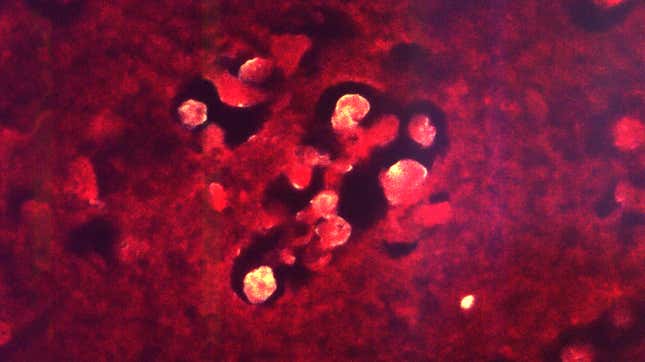
2020 is so far the year of the novel coronavirus, murder hornets, climate change-induced wildfire hell and now: a brain-eating amoeba. Yes, you read that correctly.
On Saturday, the city of Lake Jackson, Texas issued a disaster declaration after it detected the microscopic amoeba Naegleria fowleri in its water systems. Naegleria fowleri is commonly found in warm freshwater—such as lakes, rivers and hot springs—and in soil, according to the Centers for Disease Control and Prevention. The amoeba can cause a rare brain infection known as primary amebic meningoencephalitis, which almost always results in death.
In general, cases occur when water contaminated with the amoeba enters the body through the nose, the CDC states. Once the amoeba is in the nose, it travels to the brain and causes PAM. Curiously, the agency states that people cannot get infected if they swallow water contaminated with Naegleria fowleri.
The city got word that something was amiss in early September when it learned about the hospitalization of 6-year-old Josiah McIntyre due to Naegleria fowleri, who eventually died because of the infection. His family suspected that he could have inhaled contaminated water at a city splash pad or from a hose at his home.
Officials immediately took action to try to get to the bottom of the matter. They closed the splash pad and tested the water for the amoeba. The test came back negative, but additional tests of water in various locations by the CDC found three positive samples for Naegleria fowleri on Friday.
The positive samples were in the splash pad storage tank, a dead-end fire hydrant in the city’s downtown closest to the splash pad location and in the hose bib at the 6-year-old boy’s home.
Josiah McIntyre’s grandmother, Natalie McIntyre, told the Houston Chronicle on Saturday that the family just wanted people to know the amoeba was out there. The CDC states that PAM, the disease caused by Naegleria fowleri, is difficult to detect because it progresses so rapidly that diagnosis is usually made after death.
The Chronicle reports that Josiah McIntyre’s family said that by the time doctors realized what was happening to him, it was too late.
“If you’ve been exposed or possibly exposed and you experience those symptoms, get to a hospital and let somebody know,” Natalie McIntyre said.
After learning about the positive samples on Friday, Texas state officials required local water authorities to issue a “do not use water” advisory for various cities, including Lake Jackson. On Saturday, the Texas Commission for Environmental Quality lifted the advisory on Lake Jackson and put a boil water notice in place while it worked to flush and disinfect the city’s system.
State environmental quality officials said that during the period of disinfection and flushing, boiling water makes it safe for drinking and cooking. For other uses such as bathing, showering, face washing or swimming, officials urged people not to let water go up their noses.
On Sunday, the Governor of Texas, Greg Abbott, issued a state disaster declaration for Brazoria County, which encompasses Lake Jackson. State environmental quality officials have maintained that Naegleria fowleri can be handled using “using standard treatment and disinfection processes.”
I guess that’s something? Ugh, 2020, please just finish already.